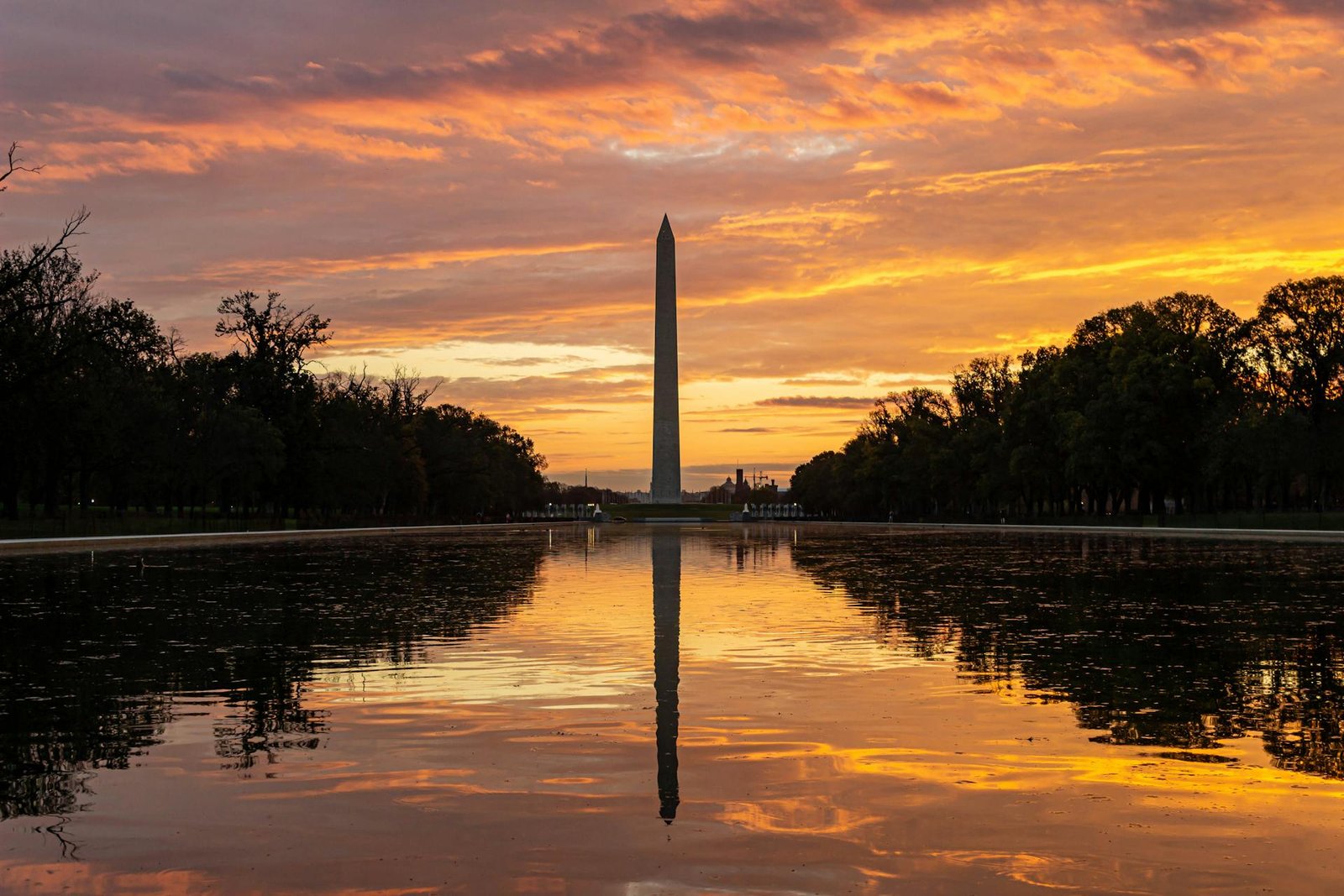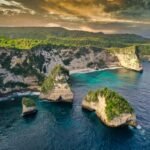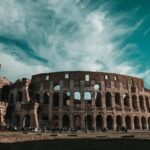Washington, D.C. is a city filled with history, but the stories of America do not stop at its borders. Within a short drive, you can visit battlefields, homes of presidents, old towns, and sites that shaped the nation. For anyone who loves history, day trips from Washington, D.C. open the door to learning more about the past while enjoying beautiful landscapes and charming towns. This guide will take you through some of the best destinations that you can visit in one day.
Mount Vernon
Only about 30 minutes south of the city, Mount Vernon is the perfect place to start. This was the home of George Washington, the first president of the United States. The large estate sits on the banks of the Potomac River and gives you a clear look at Washington’s personal life.
You can tour the mansion, which has been carefully restored to show how it looked in the 18th century. The rooms are filled with period furniture and items connected to Washington and his family. Outside, you can walk through the gardens, stables, and even see the tomb where George and Martha Washington are buried.
The museum and education center on the grounds are also excellent. They include exhibits about Washington’s role in the American Revolution and his presidency. A visit to Mount Vernon is both inspiring and personal, letting you see not only the leader but also the man behind the history books.
Gettysburg
About two hours north of Washington, D.C., in Pennsylvania, lies Gettysburg. This small town became one of the most important sites in American history during the Civil War. The Battle of Gettysburg in 1863 was a turning point, and today the battlefield is preserved as a national park.
A visit here is powerful and emotional. You can start at the Gettysburg National Military Park Museum and Visitor Center, which explains the events of the battle with films, exhibits, and the famous Cyclorama painting that brings the fight to life.
Driving or walking through the battlefield itself is an unforgettable experience. Monuments and markers show where different regiments fought, and guides tell stories of bravery and loss. One of the most meaningful stops is Soldiers’ National Cemetery, where President Abraham Lincoln gave the Gettysburg Address.
For history lovers, Gettysburg is more than just a field. It is a place where you can connect deeply with the past and reflect on the struggles that shaped the nation.
Annapolis
Just under an hour east of Washington, Annapolis is a charming city with a strong colonial past. Today it is the capital of Maryland, but in the late 18th century, it also served briefly as the capital of the United States.
Walking through downtown Annapolis feels like stepping back in time. The streets are lined with 18th-century homes, many of which have been beautifully preserved. The Maryland State House, built in 1772, is the oldest state capitol in continuous use and was once where the Continental Congress met. It is also where George Washington resigned his commission as commander-in-chief of the Continental Army.
Annapolis is also home to the United States Naval Academy. Tours of the academy give you a chance to see its historic chapel, the crypt of John Paul Jones (a hero of the Revolutionary War), and the training grounds of future naval leaders.
Alongside history, Annapolis offers a relaxed waterfront atmosphere. After exploring, you can enjoy fresh seafood by the harbor while reflecting on the city’s long connection to America’s early days.
Harpers Ferry
Located at the meeting of the Potomac and Shenandoah Rivers, Harpers Ferry, West Virginia, is about 90 minutes from Washington. This small town is packed with history and surrounded by beautiful scenery.
Harpers Ferry is best known for John Brown’s raid in 1859. Brown, an abolitionist, attempted to start an armed slave revolt by capturing the federal armory here. Though the raid failed, it pushed the nation closer to Civil War. You can visit the site of the raid and learn about its impact on the country.
The town itself is part of Harpers Ferry National Historical Park. Historic buildings line the streets, many of which house museums and exhibits. You can learn about industry, Civil War battles, and the African American experience in the region.
Beyond history, Harpers Ferry is also great for walking and hiking. Trails lead to overlooks where you can see the rivers and valleys below. It is the perfect blend of history and nature in one place.
Fredericksburg and Chancellorsville
About an hour south of Washington, the Fredericksburg and Spotsylvania National Military Park preserves four major Civil War battlefields: Fredericksburg, Chancellorsville, Wilderness, and Spotsylvania. Together, these sites tell the story of some of the war’s most intense and decisive battles.
The town of Fredericksburg itself has a long history. During the war, it was the site of fierce fighting, and you can still walk along the Sunken Road, where soldiers once clashed. Chancellorsville, just a short drive away, is often remembered as General Robert E. Lee’s greatest victory but also where Confederate General Stonewall Jackson was mortally wounded.
Each battlefield has visitor centers with exhibits and maps to help you understand the events. Driving tours let you see important landmarks, and walking the fields brings the past to life. For those who want to go deeper into Civil War history, this region is one of the richest in the country.
Charlottesville and Monticello
About two and a half hours southwest of Washington lies Charlottesville, home to Thomas Jefferson’s estate, Monticello. Jefferson, the third president of the United States and author of the Declaration of Independence, designed Monticello himself, and the home reflects both his creativity and his contradictions.
Tours of Monticello take you through the main house, gardens, and grounds. You will learn not only about Jefferson’s achievements but also about the lives of the enslaved people who lived and worked there. The stories of Sally Hemings and others show the full picture of life at Monticello.
In Charlottesville, you can also visit the University of Virginia, another of Jefferson’s creations. Its historic campus, known as the “Academical Village,” is a UNESCO World Heritage Site. Together, Monticello and the university give you a clear sense of Jefferson’s vision and legacy.
Williamsburg
If you are ready for a longer day trip, Williamsburg, Virginia, is about three hours from Washington, D.C. Colonial Williamsburg is a living history museum where the 18th century comes alive.
Costumed interpreters fill the streets, demonstrating crafts, trades, and daily life from the colonial period. You can step into blacksmith shops, taverns, and homes while hearing stories of the people who lived there. Special programs also let you meet figures like Thomas Jefferson or Patrick Henry, giving you a sense of the debates that shaped the Revolution.
Nearby, you can also explore Jamestown, the first permanent English settlement in America, and Yorktown, where the last major battle of the Revolutionary War took place. Together, these three sites are known as the Historic Triangle and offer a full picture of early American history.
Antietam
About 90 minutes northwest of Washington, Antietam National Battlefield in Maryland preserves the site of the bloodiest single day in American military history. On September 17, 1862, more than 23,000 soldiers were killed, wounded, or missing during the battle between Union and Confederate forces.
The battlefield today is quiet and peaceful, but walking its grounds is a moving experience. The Cornfield, Bloody Lane, and Burnside Bridge are key sites where the fighting was especially fierce.
At the visitor center, films and exhibits explain the events of the battle and its impact. The Union’s victory at Antietam gave President Lincoln the confidence to issue the Emancipation Proclamation, which changed the course of the war. Visiting Antietam gives you a clear sense of the cost of war and the struggle for freedom.
Manassas
Closer to Washington, just 30 miles away, lies Manassas National Battlefield Park. This site saw two major battles during the Civil War, including the first large battle in 1861. Known as the First Battle of Bull Run, it shattered the belief that the war would be short and easy.
Walking through the battlefield, you can see where soldiers first clashed and learn about the chaos that marked those early days of fighting. The visitor center offers exhibits and maps that help bring the events into focus. Because it is so close to D.C., Manassas is an easy trip for anyone interested in Civil War history.
Conclusion
Washington, D.C. is filled with monuments and museums, but some of the most powerful stories lie just outside the city. From presidential homes to Civil War battlefields, from colonial towns to sites of revolution, the region is rich with history.
These day trips let you step directly into the past. You can walk the same roads as soldiers, stand in the rooms where leaders made decisions, and see the landscapes that shaped the nation.
For history lovers, a visit to Washington, D.C. is not complete without exploring the world beyond the city. Each trip adds new depth to the story of America and makes your time in the capital even more meaningful.




